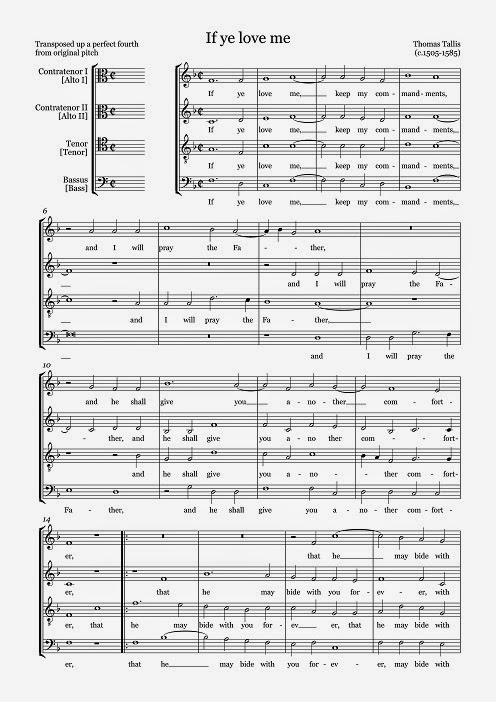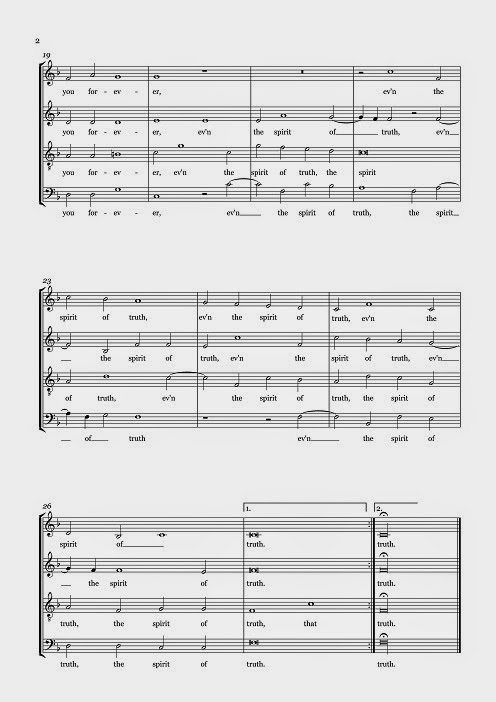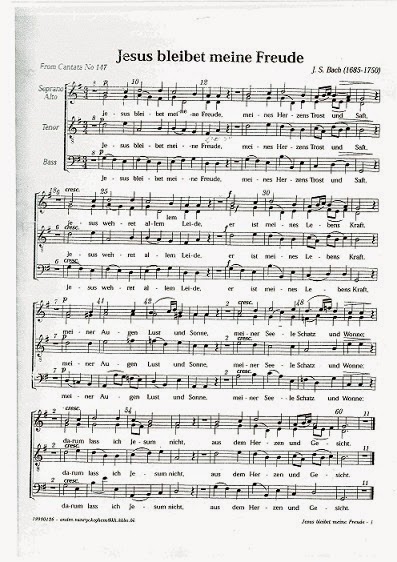Thomas Tallis (1505 ca. - 1585)
(ca. 1505 - 1585) was a famous English musician of the sixteenth century, organist and composer in the chapel of the Royal Court. His work also has a great ecumenical value
because,
while remaining faithful to the Catholic faith,
he worked for the liturgical service of the new Anglican Church.
The motet If ye love me is based on the text of the Gospel of John, chapter 14, verses 15 to 17:
If ye love me,
keep my commandments. And I will pray the Father, and he shall give
you another Comforter, that he may bide with you for ever; even the
Spirit of truth.
The execution of the motet is not particularly difficult for an amateur choir: prevail consecutive notes (ie the conjunct motion in the musical scale); polyphony is simple and the effect extraordinarily effective, fervent in the expression of God's Word.
Here the music, in F (a fourth above compared to the original key), which is used routinely in amateur choirs:
I propose audio files, where I exercise, in every section, every single phrase: first by rhythmic reading of the text, then with the repeated listening of each phrase. After this, propose to exercise two or three contiguous phrases and finally the entire part of each section.




